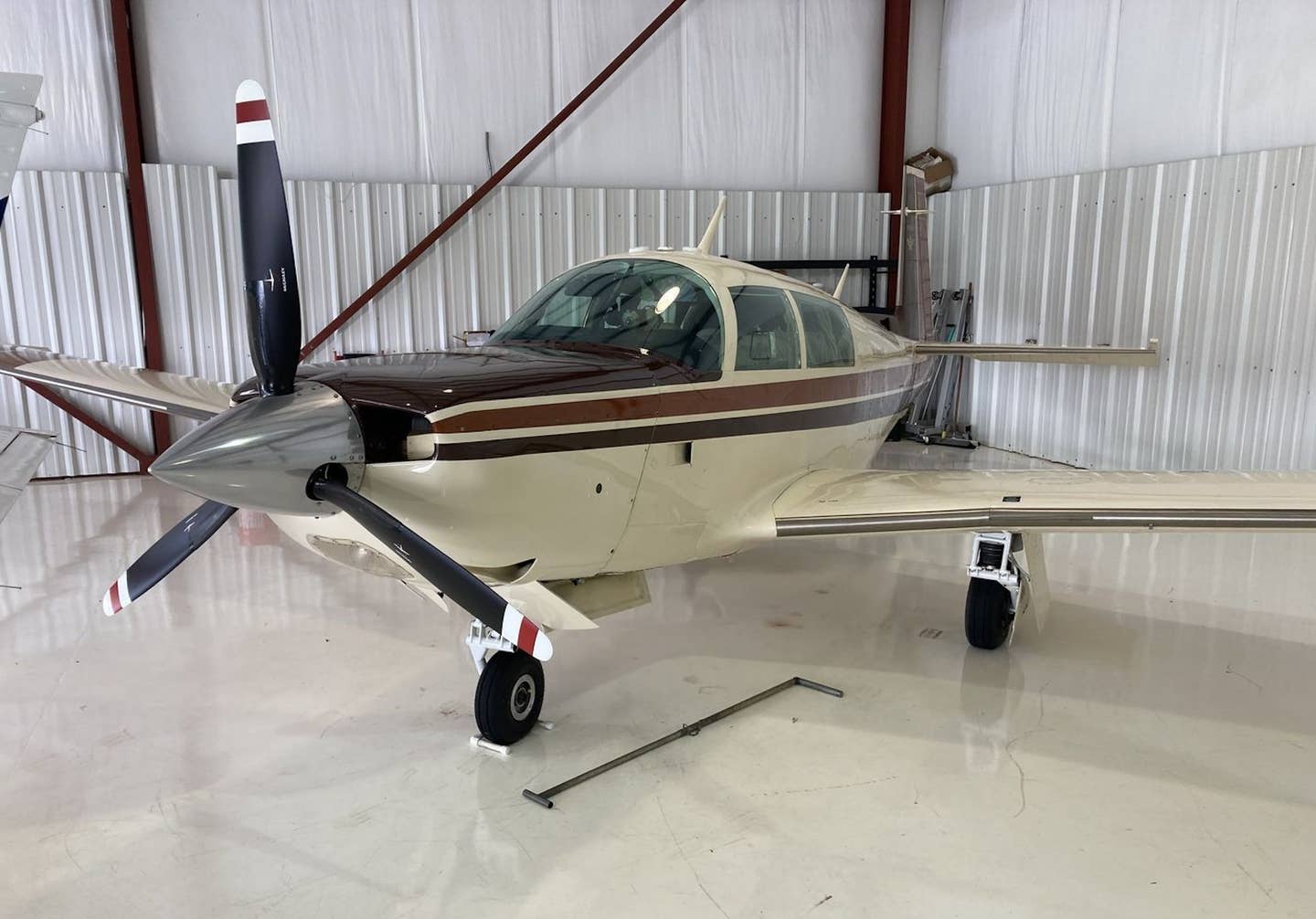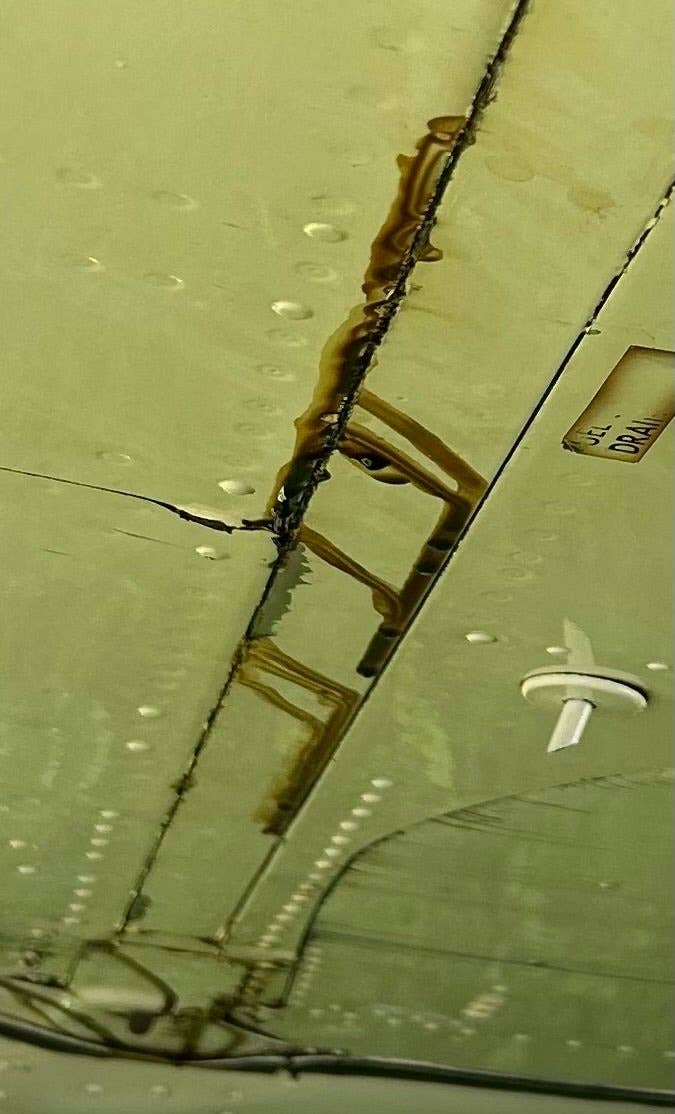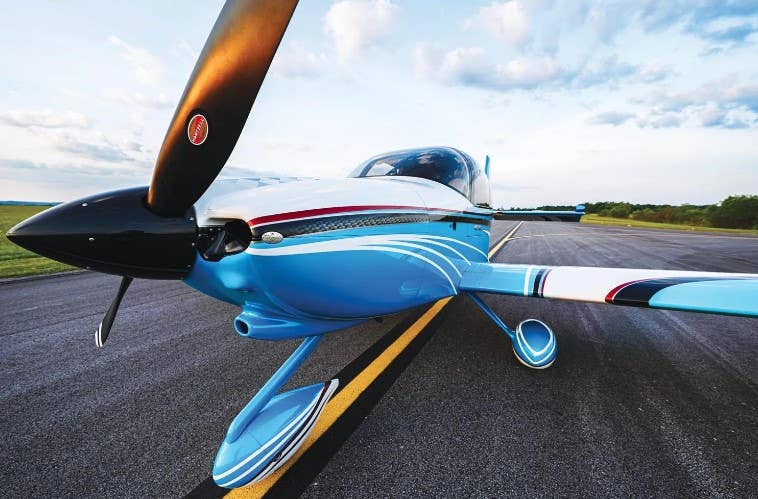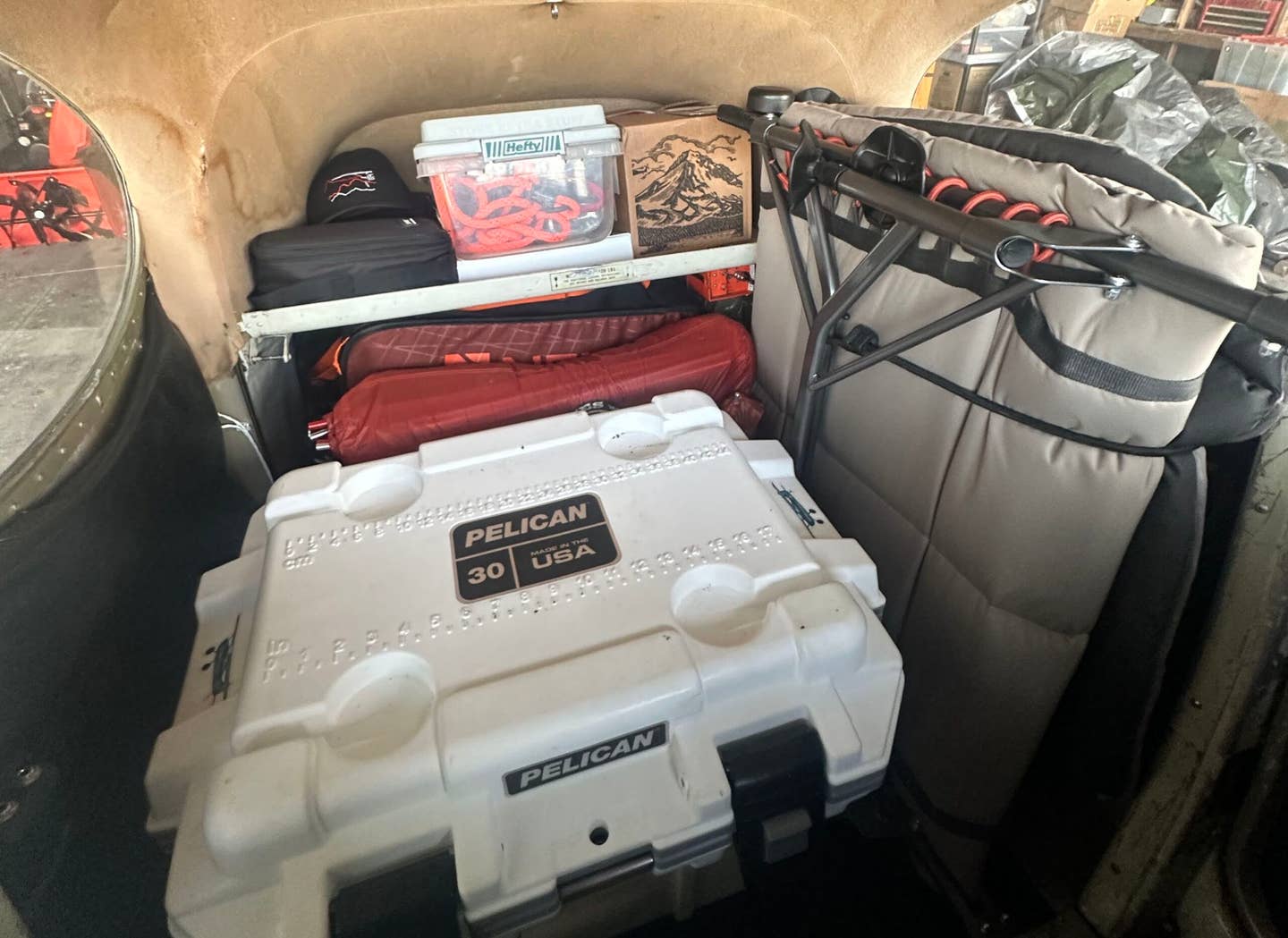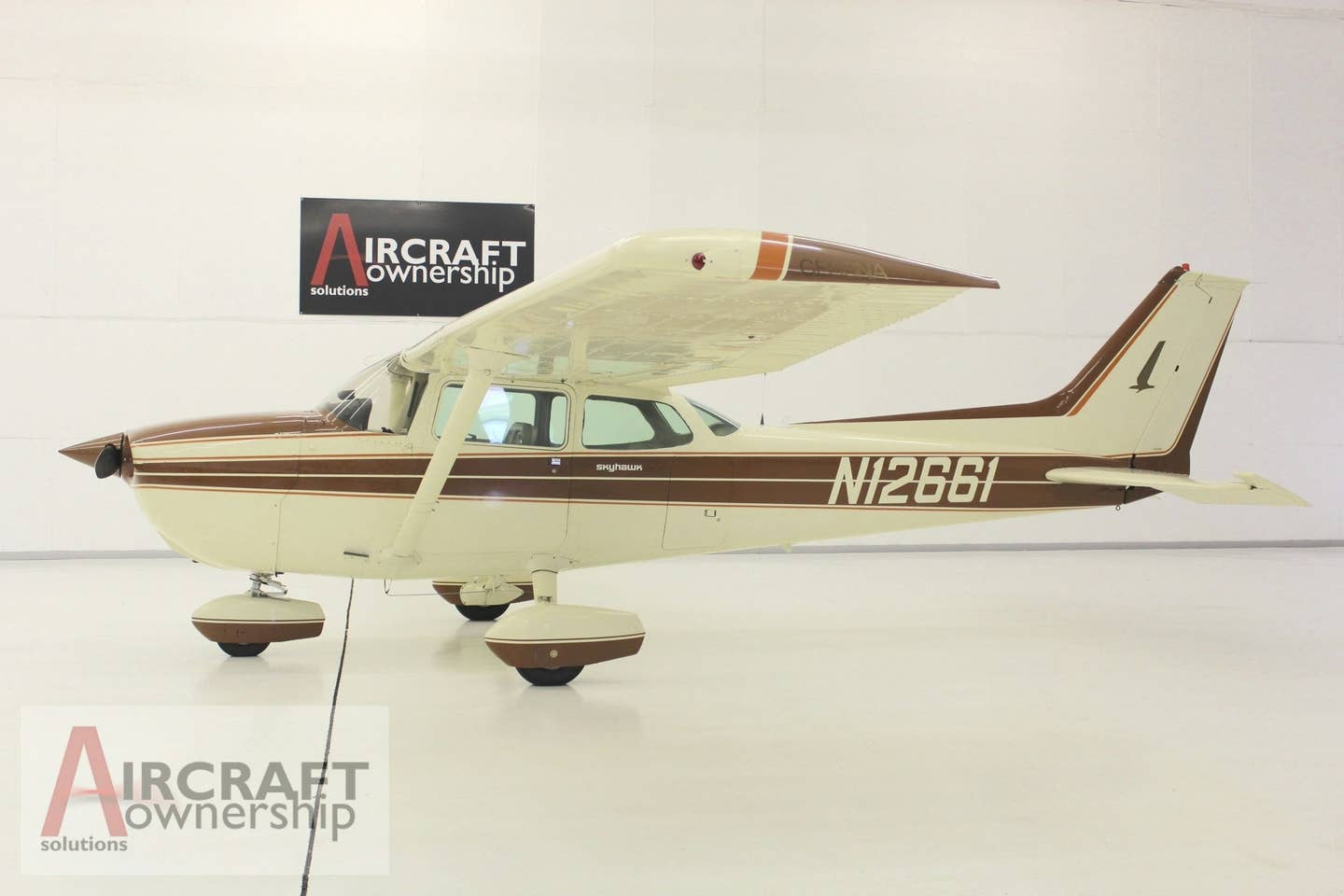We Fly: Cirrus SR G7
The big reveal of the latest in the SR series reflects a return to a beginner’s mind—in the best kind of way.

The fresh approach
Cirrus took to its next model in the SR series makes a
lot of sense. [Stephen Yeates]
The big reveal of the latest in the SR series reflects a return to a beginner’s mind—in the best kind of way.
The complexity of the instrument panel has served either to intrigue or intimidate potential pilots. Having been the former kind, I’ve had trouble putting myself in the latter’s point of view.
But with ever-advancing avionics and capabilities, I admit it can be tough even for the seasoned ones among us to keep up. That’s why the fresh approach Cirrus took to its next model in the SR series makes a lot of sense.
If you're not already a subscriber, what are you waiting for? Subscribe today to get the issue as soon as it is released in either Print or Digital formats.
Subscribe NowAnd for new pilots—and this pilot who flies Cirrus aircraft sporadically—as opposed to a seasoned owner or dedicated Cirrus instructor, the barrier to entry and re-entry has fallen significantly.
Though it’s not as overtly revolutionary as the Cirrus Airframe Parachute System (CAPS) or Safe Return enabled by Garmin Autoland on Cirrus’ SF50 Vision Jet, the reimagined flight deck in the new SR G7 and other improvements make a more immediate impact—because pilots benefit from them on every flight, from the moment you press the start button.
Wait—what??? There’s a start button?
What’s new here takes us way beyond the panel.
A Beginner’s Mind
When you must approach something from a fresh perspective, it helps to go into a beginner’s mindset.
But how to do so when you’ve known the airplane since its early development years, as I have? In a similar fashion, the engineering and product dev teams at Cirrus had to work to place themselves in that beginner’s mindset.
My first look at the G7 started with a long cross-country. And the fact that I hadn’t flown an SR for a year assisted me in taking in the new generation with as close to a newbie’s view as possible. I met up with Cirrus SR product director Ivy McIver in stealth mode at the Hagerstown Regional Airport (KHGR) in Maryland.
She warned me ahead of time that the airplane wouldn’t appear different from the outside but to expect something truly different inside. So I fired up the GoPro and prepared for her to open the door.


First Approach
From the walk-up you might notice a new paint scheme, new colors—but it’s true you won’t really register a change until you open the pilot’s door.
In fact, McIver had been flying the G7 around in broad daylight, with only a series of foiled sunshades to hide the nature of what awaited inside. This obviously kept the ruse going, and according to McIver, I was officially the first person outside of Cirrus to demo the new model, a real privilege.
- READ MORE: We Fly: Diamond DA62
After giving me a quick preview on the ground, we needed to see the G7 in action to begin to appreciate all that had been accomplished with the redesign. We flew in pursuit of good weather and photo backdrops not browned by the seasons, and headed south—nearly straight south—from Maryland to Florida by way of Hilton Head, South Carolina.
It honestly took the five-plus hours en route (and a fuel stop) to get a sense of it all.
Engine Start
Push the button. Hold it in, monitor a gauge, release. After setting things up, that’s typically all you have to do in a jet. The mag switch has been relocated, made larger to the palm, and incorporates a button to start. It’s an elegant way to make the process similar to the SF50, while still preserving the ability to isolate mags, whether in a before-takeoff check or in-flight issue. There’s no key to insert—just like with today’s automobiles. The logic is, if you can enter the airplane with the key fob, you can start the engine.
Fuel selection has also benefited from “Vision Jet-ification, ” with an automatic fuel switching protocol that alternates tanks by physically moving the fuel selector knob with every 5 gallons burned. You can override the system to manual by lifting a sliding door, but it was honestly completely forgotten within the first half hour of our flight demo. It’s very similar to that found in many single-engine turboprops as well.
Taxiing out reveals more fascinating tools. While we have experienced SafeTaxi and SurfaceWatch from Garmin before, the G7 takes it a step further with automated slewing to the proper PFD perspective during ground operations versus in flight. The functionality is smart, in that it zooms in and out, adding and subtracting info from the display based on your speed and location relative to a runway—whether you are holding in the ramp area or taxiing onto the active for takeoff, for examples.
Cross-Country Lines
The faster an airplane cuts through the air, the more of the country you can string together at one go.
But the engineering behind the G7 didn’t wring a few more knots from the carbon fiber airframe by tweaking fairings or FIKI panels. The team accomplished the most recent speed mods in the last G6 version we flew (“We Fly: Cirrus SR22T 8000,” March 2021).
Instead, the G7 begins saving the pilot time on the ground—during pre-startup, taxi, and before takeoff checks—streamlining what had at times been belt-and-suspenders checklists into the key items retained in a logical flow. A new scroll wheel fell nicely to hand as I ran through the commensurate checks during each stage of preflight, in-flight, and postflight procedures. The checklists come linked to the CAS as well, so that the appropriate ones come to the fore when an alert pops up.
- READ MORE: We Fly: Cessna TTx
Some elements are just left on. Like the nav lights. With long-life LEDs, when would you choose to leave them off? Therefore, not only do the nav lights come on when BATT 1 is turned on—the same goes for the avionics—but the nav light switch has been removed from the electrical system subpanel in front of the PFD as well.
Streamlining has targeted what’s in the PFD too. Menus have popped out of their nesting, leaving layers behind that previous pilots had to wade through. The G1000 gained complexity over the years—expanding in parallel into the G2000, G3000, and Perspective. When you can strip away those unnecessary complications, you save time in normal operations but also during abnormal and emergency procedures.
Where the pilot retains control—such as in setting the power and mixture—Cirrus incorporated aids to make standard adjustments easier. Since the engine monitoring system knows the aircraft altitude, outside air temperature, and internal temps in the Continental IO-550-N (in the case of the normally aspirated SR22 we flew for the report), it updates the green arcs on the power setting and fuel flow gauges on the display. The pilot puts the power setting at the percent power desired then sets the mixture to the top of the green arc for best power. Further leaning for LOP settings—or rich of peak settings—can utilize lean assist.
While these tools have been available in various forms in Garmin-integrated flight deck installations, the protocols underwent refining with the latest edition of the Perspective Touch+ in the SR G7.
In-Flight Maneuvering
So if the shell of the SR22 has remained the same, along with its planform, control surfaces, and powerplant, why would I take the time to fly through a full series of maneuvers—after spending five-plus hours speeding down to Florida and two more as a safety pilot in our photo mission for what you see on the cover and in these pages?
Because one more thing has changed in the G7—and it may not mean much to most pilots who fly the new model, but it impressed me enough to need to take it through its paces. That’s the updated flight control stick. The SR series’ flight control mechanism had iterated only slightly from its origins as a somewhat utilitarian-feeling half-yoke managed by trim on a hat button in the first production SR20 in the late 1990s. The upgrade in ergonomics with the G7 makes a real difference to this size-5-glove wearer.
Another new jet-like inclusion? A stick shaker. This I definitely had to see in anger, so as part of the standard test profile I conducted, we looked at both power-on (departure) and power-off (approach) stalls. Holding down the autopilot disconnect button allows you to maneuver past the ESP (electronic stability protection), and in this case, pitch up to a deck angle needed to induce preliminary stall buffeting. However, before any break, the stick shaker activated—as if the “danger Will Robinson” graphics on the PFD could be ignored—compelling the release of whatever back pressure I was holding in to induce the stall condition.
Flap overspeed protection makes for one more improvement, preventing the pilot from deploying the flaps above the programmed indicated airspeed relevant to the flap setting selected. It also prevents you from retracting the flaps when airspeed is too low.
Behind the Systems
Cirrus also calls out an intelligent new battery to support the electrical system. How can a battery demonstrate intelligence? Maybe that’s a bit of affectation—but we’re seeing certain levels of system monitoring and responsiveness in electric and hybrid aircraft, and this may be an instance where there is carryover from these innovations in battery management systems that make them seem, well, intelligent, as they optimize cells purportedly for improved performance.
Systems pages on the MFD present the details from the pilot’s operating handbook in a color-coded manner, easing quick interpretation and assessment of status for electrical, ice protection, fuel, and environmental control systems. When used in combination with the checklists, the need to pull out the pilot’s operating handbook in flight goes down—saving more time in tense situations.
The built-in oxygen system comes as an option—I suppose you can save the money and 18 pounds of added weight if you don’t plan to fly high. But at $13,900 to me it’s cheap insurance to have O2 locked and loaded so that you can access it quickly and with less fuss than a portable system. And you don’t need to be flying the turbo model up in the teens to gain from its use—most of us perform better in the airplane if you turn on the juice as low as 7,000 or 10,000 feet, especially at night.
Stacking Up the Options
The specific serial number we flew was an SR22 GTS version of the G7, equipped with air conditioning, Cirrus Global Connect, built-in oxygen, and the Hartzell lightweight three-blade composite propeller upgrade. The blend prices out at $1,136,500 and takes the weight from the standard GTS basic empty weight of 2,359 pounds to 2,419 pounds—the Hartzell prop takes off 12 pounds, while the AC adds 55 and Global Connect 6.
The standard interior has taken a turn to anything but a commonplace look and feel. Not only have the seat designs seen a visual update, but the ergonomics have improved as well. Better placement of the USB-C ports and more robust cup holders—seriously, this is an issue when they are flimsy in a million-dollar-plus aerial conveyance—round out the updates. As with the G6, the baggage door is unlocked with proximity to the key fob, and it opens with the touch of a button to assist when your hands are full. And you can see if it’s left open by CAS message and on the appropriate systems page.
Connectivity includes Garmin’s Flight Stream 510 that the avionics OEM rolled out in 2016, automating the data exchange between the aircraft, pilot, and manufacturer. Jeppesen ChartView, SiriusXM weather and audio, and Garmin Pilot come along for the ride too. The GTS package adds Cirrus Executive (yaw damper, enhanced vision system), Cirrus Awareness (active traffic, eTAWS), Cirrus Advantage (14-inch screens, taxiway routing, Surface Watch), certified flight into known ice (FIKI) protection, the Premium appearance options and GTS badging to identify the series.
For a low-end reference on the evolved series, pricing begins at $634,900 for a base model G7 SR20. All versions come standard with a three-year, 1,000-hour spinner-to-tail warranty that rivals other new piston singles. For $21,900 to $25,900, you can add two years and 1,000 more flight hours to create five-year coverage for the SR G7, depending on the model.
And we can’t help but mention the new colors, in and out, that add to the wide-ranging palette of head-turning options. While you can choose a more restrained look, Cirrus offers more to appeal to those who don’t mind drawing attention on the ramp. New exterior colors include the striking blue on N433CA, while several customer favorites remain, such as the gray on N616SP, which I flew for this piece. And the interior continues the conversation piece, with leather, bolstered seats, and satin silver vents and lights. Pilots can choose from five leather colors and two cabin interiors. The seats can be appointed with black Alcantara inserts or an all-leather design.
The Grand Total
Wrapping it up in a complete package and taking a step back, what has Cirrus Aircraft achieved here? In my estimation, the company had to have felt challenged to build on its success—with the 500th Vision Jet overall delivering in the third week of December and 389 2023 SR models flying out the door by the end of the third quarter of 2023.
Simplifying things is hard, particularly when selling at an ever-increasing price. It’s easy to chase the marketing pundits chorusing “more, more,” adding to the feature set to justify the value.
But to the Cirrus customer, who has typically been sold on the lifestyle offered and enabled by the airplane, the most elusive commodity is time. Other OEMs have thought through time-saving elements—think of the Gulfstream G700, that, when certificated, will allow the pilots to go from opening the door to engine start in less than five minutes. So this is what Cirrus really achieves with the streamlining of the flight experience made possible by the G7.
The G7 hits the mark, giving a pilot for whom technology resonates—but doesn’t wish to piddle around the airplane, tinkering on weekends, and getting things just so—the ability to walk up to the airplane, start up, and go with a streamlined approach, knowing the technology in the background has your back.
Spec Sheet: 2024 Cirrus SR G7
Price, as tested: $1,136,500
Engine: Continental IO-550-N, 310 hp
Propeller: Hartzell lightweight, composite, three-blade
Seats: 5
Length: 26 ft.
Height: 8 ft., 11 in.
Wingspan: 38 ft., 4 in.
Wing Area: 145.16 sq. ft.
Wing Loading: 24.8 lbs./sq. ft.
Power Loading: 11.61 lbs./hp
Cabin Width: 4 ft., 1 in
Cabin Height: 4 ft., 2 in.
Max Takeoff Weight: 3,600 lbs.
Max Zero Fuel Weight: 3,400 lbs.
Standard Empty Weight: 2,272 lbs., base 2024 SR22
Max Baggage: 130 lbs.
Useful Load: 1,328 lbs., base 2024 SR22
Max Usable Fuel: 92 gal.
Service Ceiling: 17,500 ft.
Max Rate of Climb: MTOW, ISA, SL: 1,310 fpm at 50% flaps (takeoff); 1,268 at 0% flaps (en route)
Max Cruise Speed: 186 ktas
Cruise Speed at 75% Power, 8,000 ft. pressure altitude, 3,400 lbs., ISA: 180 ktas
Max Range at 55% Power, 14,000 ft., ISA: 1,169 nm; 11.3 gph
Stall Speed, Flaps Up: 73 kcas
Stall Speed, Full Flaps: 61 kcas (most forward CG)
Takeoff Over 50 Ft. Obs: 1,868 ft. (ISA, sea level)
Landing Over 50 Ft. Obs: 2,535 ft. (ISA, sea level, flaps 100%)
Cockpit at a Glance: 2024 Cirrus SR G7
A. Mimicking the Vision Jet, the SR G7 features a push-button start—though mags and mixture must be properly set for ignition to take place.
B. The new Cirrus Perspective Touch+ by Garmin includes twin 12-inch displays that come standard, with 14-inch PFD and MFD an option. All feature split-screen capability.
C. The two Garmin GTC touchscreen controllers carry over from the jet as well and offer redundancy of functions.
D. The digital, dual-channel automated flight control system (AFCS) incorporates “smart servo”
technology and includes an optional yaw damper that automatically disconnects at 200 feet agl.
E. Updated synoptic pages and streamlined checklists aid in the monitoring of both systems and procedures throughout all phases of flight.
F. The Cirrus IQ app gives the pilot remote viewing and control. Optional Cirrus Global Connect delivers worldwide texting, telephone service, and weather.
This column first appeared in the January-February 2024/Issue 945 of FLYING’s print edition.
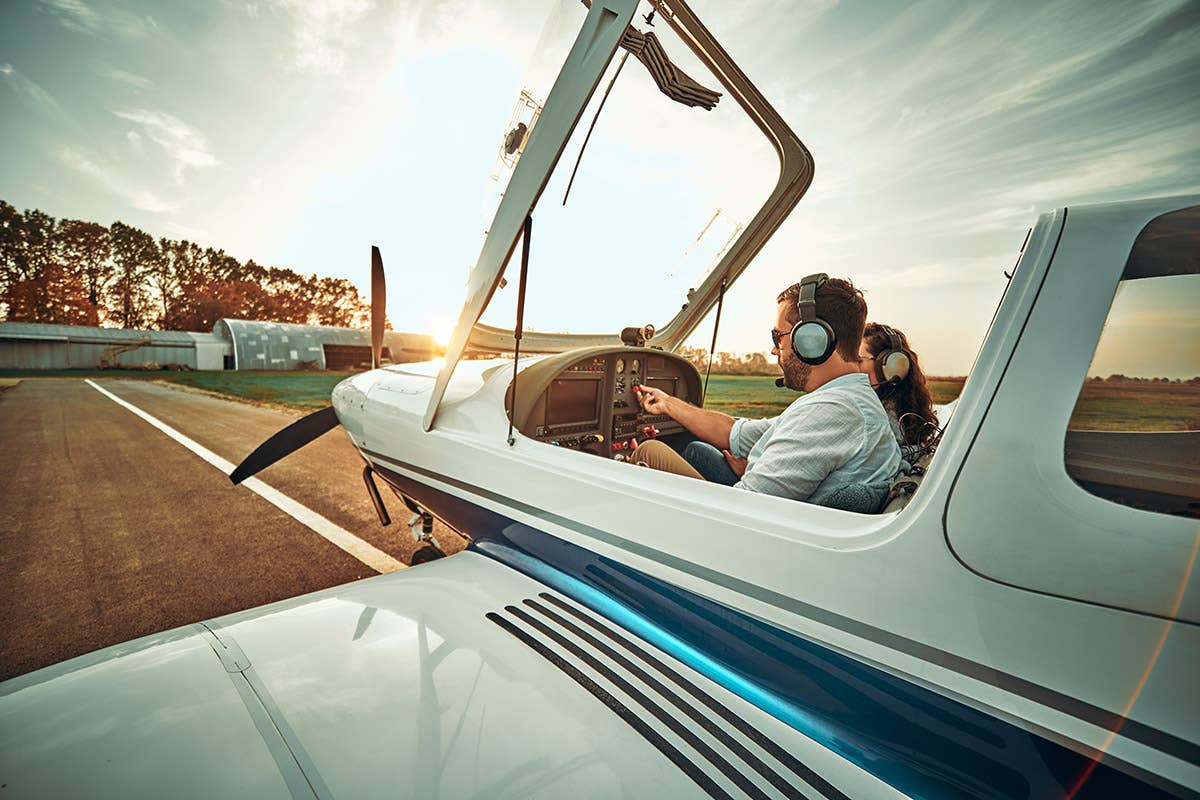
Subscribe to Our Newsletter
Get the latest FLYING stories delivered directly to your inbox


